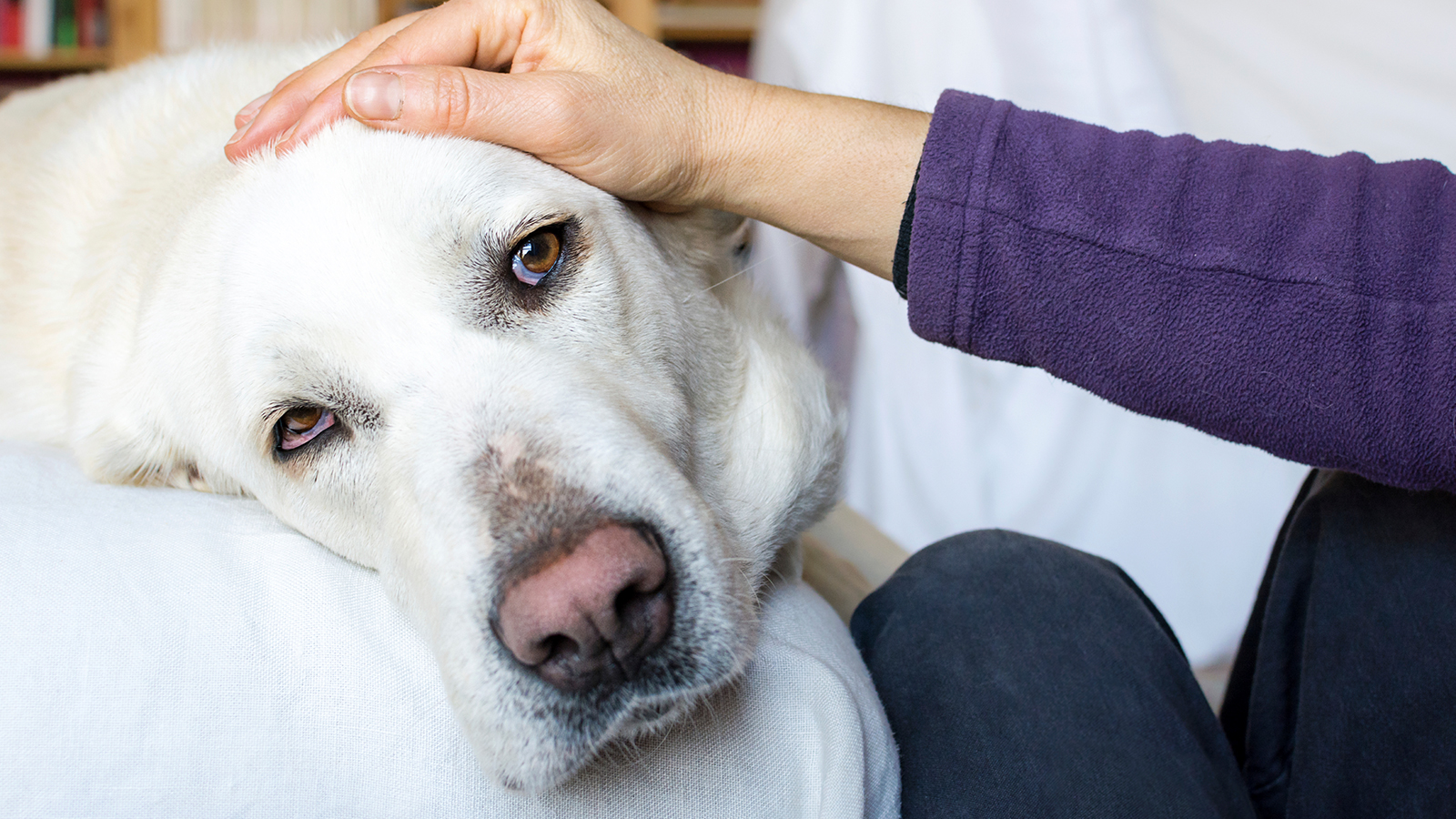Español
Your nine-year old dog has been drinking a lot more lately & eating everything in sight. Plus, he’s losing hair & has a pot-bellied appearance. A visit to the vet & some diagnostic tests confirm that he has hyperadrenocorticism, commonly known as Cushing’s disease or Cushing’s syndrome. Cushing’s disease results when the body produces too much of a hormone called cortisol. Cortisol is produced & stored by the adrenals, two small glands that sit on top of the kidneys.
“Cortisol is one of the body’s natural steroids,” says Ann Stohlman, V.M.D., a veterinarian in FDA’s Center for Veterinary Medicine, adding that a normal amount of cortisol helps the body adapt in times of stress. Cortisol also helps to fight infections & maintain proper body weight & condition.
But too much cortisol weakens the immune system, leaving the body vulnerable to other diseases & infections.
Two Common Types
In dogs, Cushing’s disease occurs naturally & is either pituitary-dependent or adrenal-dependent. About 80% to 85% of Cushing’s is pituitary-dependent, meaning it’s triggered by a tumor on the pituitary, a pea-sized gland at the base of the brain.
The pituitary makes a number of hormones, including adrenocorticotropic hormone (ACTH). The pituitary tumor causes overproduction of ACTH, which travels through the bloodstream to the adrenal glands, stimulating them to produce more cortisol than the body needs.
In the other 15% to 20% of Cushing’s dogs, a tumor in one or both adrenal glands produce excess cortisol.
The type of Cushing’s disease may determine what kind of treatment is prescribed.
Veterinarians use blood tests to diagnose Cushing’s & to differentiate between disease caused by the pituitary or the adrenals. They may also use an ultrasound to help detect a tumor on an adrenal gland.
Signs of Cushing’s Disease
Cushing’s disease typically occurs in middle-aged to older dogs. The disease develops slowly & the early signs are not always noticed. Symptoms in dogs include
- increased thirst
- increased urination
- increased appetite
- reduced activity
- excessive panting
- thin or fragile skin
- hair loss
- recurrent skin infections
- enlargement of the abdomen, resulting in a “pot-bellied” appearance
Treating Cushing’s Disease
Most veterinarians treat both adrenal- & pituitary-dependent Cushing’s disease with medication. The only way to “cure” Cushing’s disease is to remove the adrenal tumor if the disease is adrenal-dependent & the tumor hasn’t spread, says Stohlman. However, because of the complexity & risks of the surgery, most cases are treated with medication. Surgical techniques to remove pituitary tumors in dogs are being studied, but surgery is not a widely available option.
Although Cushing’s is typically a lifelong condition, the disease usually can be managed with medications. “It’s important for a veterinarian to see the dog regularly & do blood tests,” Stohlman says. “Monitoring blood tests & response to treatment help determine the right dose, which may need to be adjusted periodically.”
Frequent blood tests & veterinary checkups are usually required in the first few months after starting treatment & then every few months after that, depending on the dog’s response to treatment & tolerance to the medication.
Vetoryl (trilostane) is the only drug approved by FDA to treat both pituitary- & adrenal-dependent Cushing’s in dogs. This prescription drug works by stopping the production of cortisol in the adrenal glands. Vetoryl should not be given to a dog that
- has kidney or liver disease
- takes certain medications used to treat heart disease
- is pregnant
The drug’s most common side effects are poor or reduced appetite, vomiting, lack of energy, diarrhea, & weakness. Occasionally, more serious side effects, including bloody diarrhea, collapse, severe sodium/potassium imbalance, & destruction of the adrenal gland may occur, & may result in death.
Only one other drug, Anipryl (selegiline), is FDA-approved to treat Cushing’s disease in dogs, but only to treat certain cases caused by a pituitary tumor.
In the past, veterinarians often used a chemotherapy drug approved for people called Lysodren (mitotane) “off-label” to treat Cushing’s in dogs. Lysodren destroys the layers of the adrenal gland that produce cortisol. It requires careful monitoring & can have severe side effects.
“Extra-label” use of a drug means using an FDA-approved animal or human drug in a way that is not listed on the label, which is sometimes called “off-label” use. But because dogs may react unpredictably to human drugs, says Stohlman, it’s beneficial to have treatments available that have been studied in dogs & approved specifically for them.
“Treating Cushing’s is a balancing act,” Stohlman says. “But dogs with the disease can live a good life if they are monitored closely by a veterinarian & the owner is diligent about bringing the dog in for blood work & checkups, watching for side effects & giving the medication as directed.”
If you think your dog is having a side effect to Vetoryl, Anipryl, or another drug, call your veterinarian right away. FDA encourages you to work with your veterinarian to report problems with any drug. For information on how to report side effects, see How to Report Animal Drug & Device Side Effects & Product Problems.
Source: FDA Consumer Updates

